[tldr]
- About 60 percent of people report some kind of abuse or trauma in their childhood.
- Trauma is a huge block when it comes to improving your performance. The good news is that you can heal trauma for good and become stronger for it.
- You can take the quiz below to measure how traumatic your childhood has been.
- Neurofeedback, EMDR therapy, psychedelic therapy, and meditation are all powerful ways to process your trauma and heal from it.
[/tldr]
Trauma is uncomfortable to bring up in conversation. You don’t often hear about it, despite the fact that 60 percent of adults report some kind of abuse or trauma in their childhood. [ref url=”https://www.ncjrs.gov/pdffiles1/ojjdp/227744.pdf”][ref url=”http://justice.aksummit.com/PDF/081712_childhood_trauma.pdf”] You hear even less about tools to heal trauma — to uncover it, face it, feel the pain associated with it, and then let it go.
The lack of discussion around trauma is partly cultural, but it’s also because trauma is hard to pin down. It’s so overwhelming that your brain often tries to bury it; it’s too painful to face, so you push it down or rationalize it and continue with your life. That works in the short-term, but in the long-term, buried trauma can impact your stress response, cause chronic cortisol release, decrease your emotional regulation, and bring up a variety of coping behaviors that hurt your performance.
By the same token, healing your childhood trauma is one of the most extraordinary biohacks you can do. It unlocks happiness, gratitude, optimism, productivity, and a renewed appreciation for life.
Overcoming trauma
In a recent Bulletproof Radio podcast episode [iTunes], cancer doctor and trauma expert Nasha Winters talks about overcoming childhood trauma and how profoundly it impacts performance.
“Trauma removal techniques today are much stronger [than ever before],” Winters says. “…we can re-circuit our psychology.”
A difficult past doesn’t have to cast a shadow over your life. Here’s a look at how trauma works, as well as four ways you can heal from it.
How trauma rewires your brain (it’s not all bad)
Trauma affects your biology in measurable ways. After a traumatic experience, your brain may become stuck in fight-or-flight mode, constantly watching for threats and releasing cortisol even in the absence of a stressor. [ref url=”https://www.ncbi.nlm.nih.gov/pmc/articles/PMC3181836/”]
Your hippocampus and prefrontal cortex, two brain regions involved in regulating emotion, may shrink in size from a combination of stress and constantly suppressing emotional pain. [ref url=”https://www.ncbi.nlm.nih.gov/pubmed/10553030″][ref url=”https://www.ncbi.nlm.nih.gov/pubmed/18037013″]
And according to research using data from the Adverse Childhood Experience (ACE) quiz (take it here), which measures the trauma that comes from a rough childhood, adversity you experience before you’re 18 puts you at risk for[ref url=”https://www.ncbi.nlm.nih.gov/pubmed/28419887″][ref url=”http://www.apa.org/science/about/psa/2017/04/adverse-childhood.aspx”]:
– Depression
– Anxiety
– Decreased performance at work
– Trouble sleeping
– Chronic stress
– Alcoholism
– Addiction
– Suicide
Trauma is clearly destructive — but there’s a “what doesn’t kill you makes you stronger” side to it too. If you’ve faced a lot of adversity in your life, the fact that you’re still here means you were resourceful enough to overcome it, even if you picked up trauma along the way. Learning how to get rid of old traumatic patterns and loops can leave you with the best of both worlds: the resilience of someone who overcomes, as well as optimism and mental freedom.
RELATED: Hormesis: How to Use Stress to Boost Your Resilience
Ways to heal emotional trauma
Here are four ways to work through emotional pain and let go of a traumatic past.
1) Neurofeedback for immediate results
Neurofeedback is probably the most efficient way to face trauma and learn more about your emotions and how your brain works. That’s how 40 Years of Zen got its name: by the end of the five days of intensive neurofeedback, your brain waves resemble those of a lifelong Zen monk.
In neurofeedback, you have electrodes connected to your head that show you your own brain activity in real time. Using that data, you can train yourself to have higher alpha waves — the calm, focused brain waves you create during deep meditation.[ref url=”https://www.ncbi.nlm.nih.gov/pubmed/19922249″]
Forgiveness is the fastest way to let go of painful experiences and permanently boost alpha waves, and it’s a big component of 40 Years of Zen. Facing trauma, feeling the pain, finding forgiveness, and letting it go, all with the guidance of neurofeedback and qualified therapists, rewires your brain.[ref url=”https://www.ncbi.nlm.nih.gov/pubmed/23341412″] And because of the neurofeedback, you can watch your brain release trauma and get stronger in real time. Neurofeedback is one of the most powerful biohacks available.
2) EMDR Therapy to rewire your response to triggers
Eye movement desensitization and reprocessing (EMDR) therapy helps you find triggers that cause a traumatic pattern or loop in your brain activity, and trains you to recalibrate your brain and process the event that caused the trigger.
In an EMDR session, you watch a light move from left to right at specific speeds. The eye movement puts your brain in a state where you can uncover and face distressing events much more easily. A therapist helps guide you through the events, process them, and rewire your brain response for the better.
It’s still not clear exactly how or why EMDR works, but a wide body of research has found that it’s effective at healing emotional trauma in the long-term.[ref url=”https://www.ncbi.nlm.nih.gov/pmc/articles/PMC3951033/”]
3) Psychedelic therapy
In her recent Bulletproof Radio podcast episode [iTunes], Winters talks about overcoming her difficult start to life. Winters scored a 10/10 on the ACE questionnaire, meaning she had the most traumatic childhood measurable. She credits psychedelics as one of the three biggest things that helped her heal.
“An experience with Psilocybin cubensis (hallucinogenic mushrooms)…[helped] to lift me up and see what was around me, to see the possibility of my own healing,” she says.
Psychedelics can change how you look at the world in a lasting and deeply healing way. Clinical studies have found that psychedelic experiences with mushrooms or LSD, combined with psychotherapy, can reverse treatment-resistant depression long-term after only one or two sessions.[ref url=”https://www.ncbi.nlm.nih.gov/pmc/articles/PMC5813086/”]
Psychedelics also permanently increase people’s openness scores, which correlates with increased creativity,[ref url=”https://www.ncbi.nlm.nih.gov/pmc/articles/PMC3537171/”][ref url=”https://onlinelibrary.wiley.com/doi/abs/10.1111/j.1467-6494.1992.tb00970.x”] and 70% of people who took psychedelics for the first time rated the experience as one of the five most meaningful experiences of their lives, on par with the birth of a child.[ref url=”https://www.ncbi.nlm.nih.gov/pubmed/16826400″]
Of course, psychedelics are illegal in many places. Unless you go to Amsterdam or South America, your best hope of legal psychedelic therapy is to join one of the many clinical studies on psychedelics and trauma happening in the U.S. Be sure you know the benefits and risks of psychedelics before using them.
4) Meditation (especially alongside psychotherapy)
Meditation is an amazing biohack. It’s free, you can do it anywhere and any time, and it really works for building a stronger brain and becoming more aware of your emotions.
Meditating regularly relieves chronic stress and boosts alpha brain waves, which are associated with calm focus and happiness.[ref url=”https://www.ncbi.nlm.nih.gov/pubmed/19922249″] Meditation also increases emotional regulation, emotional intelligence, self-awareness, and creativity, all things that trauma decreases.[ref url=”https://www.ncbi.nlm.nih.gov/pmc/articles/PMC5337506/”][ref url=”https://www.ncbi.nlm.nih.gov/pmc/articles/PMC3994657/”]
Increased emotional self-awareness and higher alpha waves make it easier for you to uncover negative brain loops caused by trauma, see them for what they are, and rewire your response. For a particularly intense meditative experience, try a 10-day silent meditation retreat.
Many people report that these retreats are both the most difficult and most healing experiences of their lives. Bonus? They’re typically free.
For maximum growth and help navigating your trauma, pair meditation with psychotherapy. A good therapist will guide you through your emotions and help you heal.
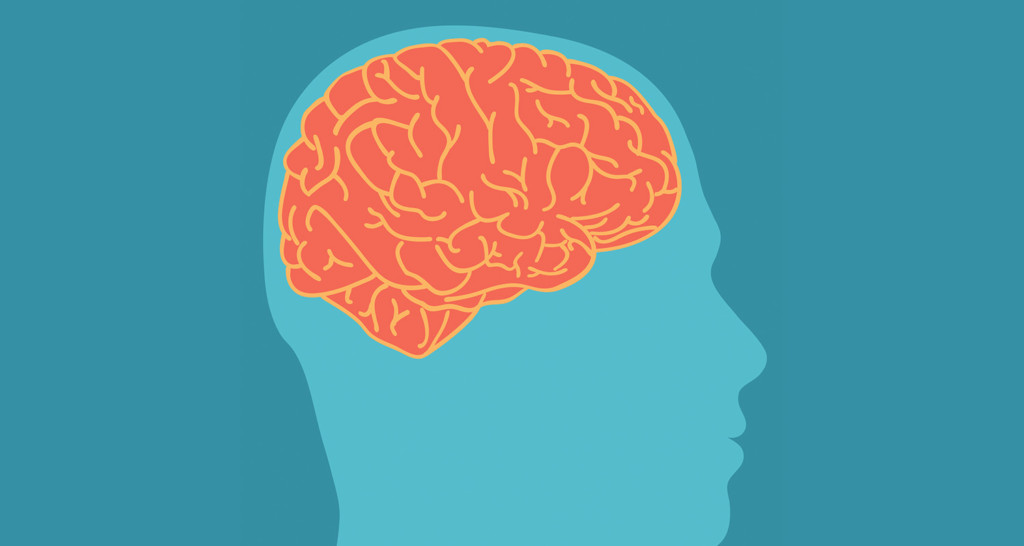






 There’s a reason turmeric tops the list of the
There’s a reason turmeric tops the list of the  Polyphenols are a class of potent antioxidants that turn off inflammatory pathways and protect your cells from oxidative stress.[ref url=”https://www.ncbi.nlm.nih.gov/pmc/articles/PMC5055983/”] You want to get as many of them in your daily diet as you can.
Polyphenols are a class of potent antioxidants that turn off inflammatory pathways and protect your cells from oxidative stress.[ref url=”https://www.ncbi.nlm.nih.gov/pmc/articles/PMC5055983/”] You want to get as many of them in your daily diet as you can.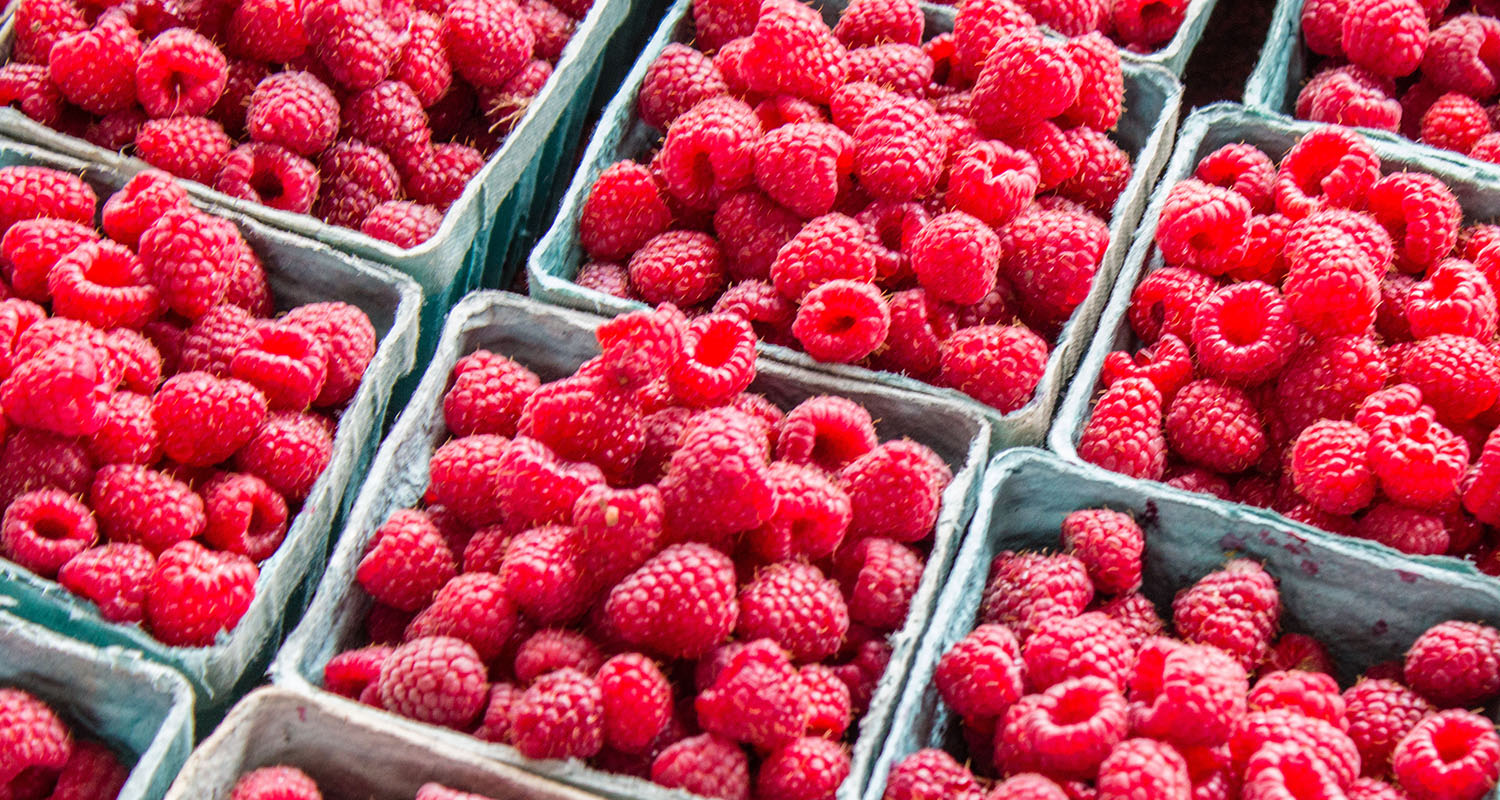 Brightly colored vegetables and fruits are also a dense source of anti-inflammatory polyphenols. Berries are the most polyphenol-rich fruits,[ref url=”https://www.ncbi.nlm.nih.gov/pmc/articles/PMC5253986/”] and they also happen to be low in sugar, which makes them perfect on the Bulletproof Diet. If you want to decrease inflammation or address chronic pain, try eating a couple servings per day of blueberries, raspberries, blackberries or strawberries. You can also add in colorful veggies like red cabbage, spinach, kale, rainbow chard, broccoli, and asparagus (for a more comprehensive list, check out the
Brightly colored vegetables and fruits are also a dense source of anti-inflammatory polyphenols. Berries are the most polyphenol-rich fruits,[ref url=”https://www.ncbi.nlm.nih.gov/pmc/articles/PMC5253986/”] and they also happen to be low in sugar, which makes them perfect on the Bulletproof Diet. If you want to decrease inflammation or address chronic pain, try eating a couple servings per day of blueberries, raspberries, blackberries or strawberries. You can also add in colorful veggies like red cabbage, spinach, kale, rainbow chard, broccoli, and asparagus (for a more comprehensive list, check out the  Wild salmon is one of the best dietary sources of EPA and DHA omega-3 fatty acids. You want a lot of them, especially if you’re dealing with inflammation or chronic pain. Your body uses omega-3s and omega-6s to make your cell membranes, and it will take whichever one you give it. Omega-6s are inflammatory, while omega-3s are not — so one of the best ways to decrease systemic inflammation is to shift your dietary omega-6:omega-3 ratio in favor of omega-3s.[ref url=”https://www.ncbi.nlm.nih.gov/pubmed/12442909″]
Wild salmon is one of the best dietary sources of EPA and DHA omega-3 fatty acids. You want a lot of them, especially if you’re dealing with inflammation or chronic pain. Your body uses omega-3s and omega-6s to make your cell membranes, and it will take whichever one you give it. Omega-6s are inflammatory, while omega-3s are not — so one of the best ways to decrease systemic inflammation is to shift your dietary omega-6:omega-3 ratio in favor of omega-3s.[ref url=”https://www.ncbi.nlm.nih.gov/pubmed/12442909″]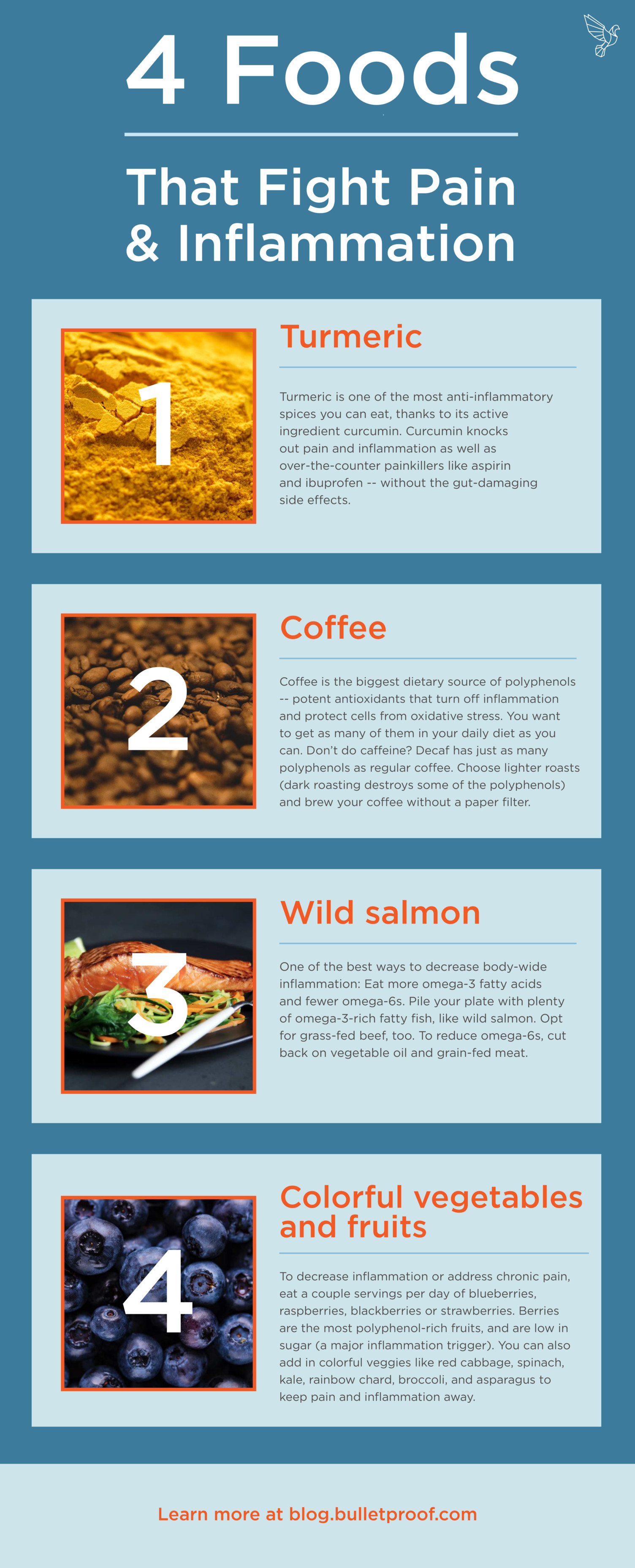
 Sugar is by far the most inflammatory food you can eat. More and more research is coming out showing how sugar compromises your biology and causes persistent, systemic inflammation.[ref url=”https://www.ncbi.nlm.nih.gov/pubmed/18469238/”][ref url=”https://www.ncbi.nlm.nih.gov/pmc/articles/PMC3494382/”] It’s important to mention that sugar causes inflammation even in healthy people, and spikes inflammation even in people with no risk of diabetes or metabolic syndrome.[ref url=”https://www.ncbi.nlm.nih.gov/pmc/articles/PMC4579563/”]
Sugar is by far the most inflammatory food you can eat. More and more research is coming out showing how sugar compromises your biology and causes persistent, systemic inflammation.[ref url=”https://www.ncbi.nlm.nih.gov/pubmed/18469238/”][ref url=”https://www.ncbi.nlm.nih.gov/pmc/articles/PMC3494382/”] It’s important to mention that sugar causes inflammation even in healthy people, and spikes inflammation even in people with no risk of diabetes or metabolic syndrome.[ref url=”https://www.ncbi.nlm.nih.gov/pmc/articles/PMC4579563/”] You read about the relationship between omega-3s and omega-6 fats a moment ago: omega-6s are pro-inflammatory, while omega-3s are not. In his
You read about the relationship between omega-3s and omega-6 fats a moment ago: omega-6s are pro-inflammatory, while omega-3s are not. In his  Whole grains often rank high on anti-inflammatory diets. For the majority of people, especially people dealing with chronic inflammation, eating them is a big mistake.
Whole grains often rank high on anti-inflammatory diets. For the majority of people, especially people dealing with chronic inflammation, eating them is a big mistake. Genetically modified organisms (GMOs) — also labelled as genetically engineered, bioengineered, or recombinant) — are organisms that contain artificially altered genetic material that would not otherwise occur in nature. Scientists can physically edit the DNA of an organism to achieve a desired change, such as improving the yield of a crop, causing bacteria to produce insulin, or making kittens glow (y’know, useful stuff). When people talk about GMO foods, they’re generally referring to genetically modified plant crops.
Genetically modified organisms (GMOs) — also labelled as genetically engineered, bioengineered, or recombinant) — are organisms that contain artificially altered genetic material that would not otherwise occur in nature. Scientists can physically edit the DNA of an organism to achieve a desired change, such as improving the yield of a crop, causing bacteria to produce insulin, or making kittens glow (y’know, useful stuff). When people talk about GMO foods, they’re generally referring to genetically modified plant crops. When GMOs were first introduced in the ‘70s, the scientific community greeted them as the future of biology. Scientists now had the technology to edit the genetic master code of organisms, the ultimate biohack. While the uses of genetic engineering range from chemical production to pharmaceuticals, its most debated use is in food production.
When GMOs were first introduced in the ‘70s, the scientific community greeted them as the future of biology. Scientists now had the technology to edit the genetic master code of organisms, the ultimate biohack. While the uses of genetic engineering range from chemical production to pharmaceuticals, its most debated use is in food production. GMO foods and their derivatives are not included on the Bulletproof Diet, but their health is a hot topic for debate. Studies are contradicting, and few long-term human or animal studies are available, exposing claims on both sides of the fence to criticism.
GMO foods and their derivatives are not included on the Bulletproof Diet, but their health is a hot topic for debate. Studies are contradicting, and few long-term human or animal studies are available, exposing claims on both sides of the fence to criticism.
 In the case of our food system, the risks of GMO foods go beyond the genetic modification itself. GMOs such as Monsanto’s Bt toxin crops literally produce pesticides themselves — you can’t rinse that off. The Bt Cry-protein toxins formed by these plants do cause immune (but not allergic) responses in animal tests, as well as damage to intestinal goblet cells, and increased kidney weight in pigs fed Bt corn.[ref url=”https://www.ncbi.nlm.nih.gov/pubmed/21298004″][ref url=”https://www.ncbi.nlm.nih.gov/pubmed/21733303″] While the effects of this toxin may be minute, the long term impact in humans is unknown.
In the case of our food system, the risks of GMO foods go beyond the genetic modification itself. GMOs such as Monsanto’s Bt toxin crops literally produce pesticides themselves — you can’t rinse that off. The Bt Cry-protein toxins formed by these plants do cause immune (but not allergic) responses in animal tests, as well as damage to intestinal goblet cells, and increased kidney weight in pigs fed Bt corn.[ref url=”https://www.ncbi.nlm.nih.gov/pubmed/21298004″][ref url=”https://www.ncbi.nlm.nih.gov/pubmed/21733303″] While the effects of this toxin may be minute, the long term impact in humans is unknown. How GMOs impact farmers
How GMOs impact farmers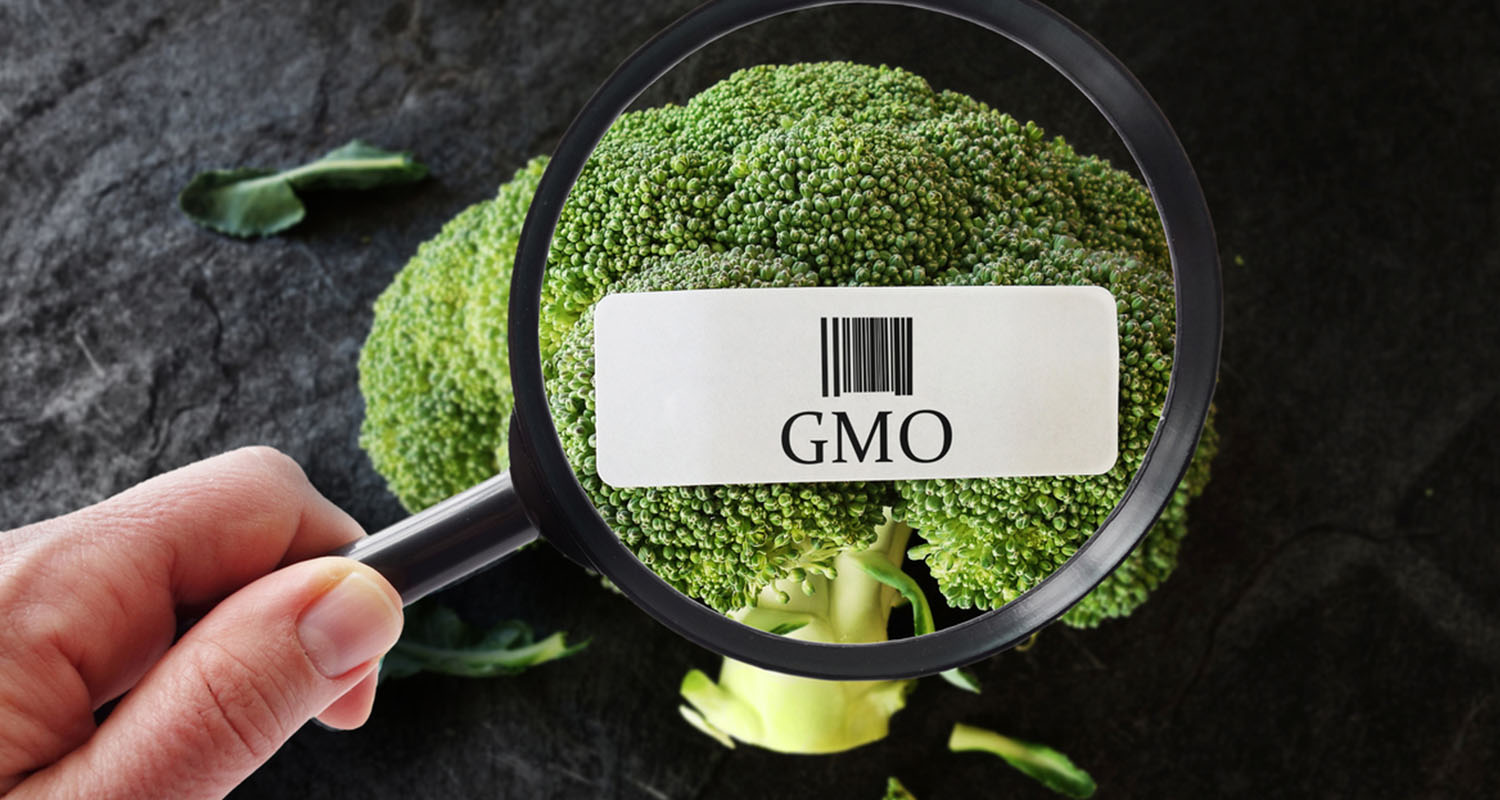 How can you tell if your food is genetically engineered? As awareness of GMO technology increases, more and more consumers demand the right to know. Polls consistently show that around 90% of Americans believe GMO foods should be labeled, yet the U.S. has some of the most lax laws surrounding GMO disclosure.[ref url=”https://www.centerforfoodsafety.org/issues/976/ge-food-labeling/us-polls-on-ge-food-labeling”][ref url=”http://www.loc.gov/law/help/restrictions-on-gmos/”]
How can you tell if your food is genetically engineered? As awareness of GMO technology increases, more and more consumers demand the right to know. Polls consistently show that around 90% of Americans believe GMO foods should be labeled, yet the U.S. has some of the most lax laws surrounding GMO disclosure.[ref url=”https://www.centerforfoodsafety.org/issues/976/ge-food-labeling/us-polls-on-ge-food-labeling”][ref url=”http://www.loc.gov/law/help/restrictions-on-gmos/”] Your brain runs on neurotransmitters, chemicals that let your neurons (brain cells) communicate with one another. Neurotransmitters bind to receptors on your neurons, much like a key fits into a lock. This key-in-the-lock process runs pretty much everything you do. Movement, thoughts, emotions, senses, breathing, heartbeat — they all rely on neurotransmitters binding to receptors.
Your brain runs on neurotransmitters, chemicals that let your neurons (brain cells) communicate with one another. Neurotransmitters bind to receptors on your neurons, much like a key fits into a lock. This key-in-the-lock process runs pretty much everything you do. Movement, thoughts, emotions, senses, breathing, heartbeat — they all rely on neurotransmitters binding to receptors. Study after study has found that both GABAA and GABAB activation rapidly and reliably decrease anxiety.[ref url=”https://www.ncbi.nlm.nih.gov/pubmed/15629203″][ref url=”https://www.ncbi.nlm.nih.gov/pubmed/16971751″][ref url=”https://www.ncbi.nlm.nih.gov/pubmed/12662130″][ref url=”https://www.ncbi.nlm.nih.gov/pubmed/17117412″][ref url=”https://www.ncbi.nlm.nih.gov/pmc/articles/PMC4303399/”] — so much so that benzodiazepines, strong GABA activators, have become the most common drug for treating anxiety.[ref url=”https://books.google.com/books?id=EZlsCgAAQBAJ&pg=PA195″]
Study after study has found that both GABAA and GABAB activation rapidly and reliably decrease anxiety.[ref url=”https://www.ncbi.nlm.nih.gov/pubmed/15629203″][ref url=”https://www.ncbi.nlm.nih.gov/pubmed/16971751″][ref url=”https://www.ncbi.nlm.nih.gov/pubmed/12662130″][ref url=”https://www.ncbi.nlm.nih.gov/pubmed/17117412″][ref url=”https://www.ncbi.nlm.nih.gov/pmc/articles/PMC4303399/”] — so much so that benzodiazepines, strong GABA activators, have become the most common drug for treating anxiety.[ref url=”https://books.google.com/books?id=EZlsCgAAQBAJ&pg=PA195″] GABAA activation can help you fall asleep and stay asleep. But, as with anxiety, there’s a sweet spot with GABA and sleep. Too little GABA and you won’t fall asleep at all;[ref url=”https://www.ncbi.nlm.nih.gov/pmc/articles/PMC3353037/”] too much GABA and you’ll go out like a light, but you won’t reach the deeper stages of sleep that are essential for rest and recovery. Benzodiazepines, for example, cause people to fall asleep faster and wake up less, but keep them from reaching deep sleep.[ref url=”https://www.ncbi.nlm.nih.gov/pubmed/11983310″]
GABAA activation can help you fall asleep and stay asleep. But, as with anxiety, there’s a sweet spot with GABA and sleep. Too little GABA and you won’t fall asleep at all;[ref url=”https://www.ncbi.nlm.nih.gov/pmc/articles/PMC3353037/”] too much GABA and you’ll go out like a light, but you won’t reach the deeper stages of sleep that are essential for rest and recovery. Benzodiazepines, for example, cause people to fall asleep faster and wake up less, but keep them from reaching deep sleep.[ref url=”https://www.ncbi.nlm.nih.gov/pubmed/11983310″] GABA activation also improves mood, although it seems to be indirect and likely comes from easing anxiety and stress.[ref url=”https://www.ncbi.nlm.nih.gov/pubmed/17117412GABA”] doesn’t seem to affect pure depression.[ref url=”https://www.sciencedirect.com/science/article/pii/0165032790900438″] In other words, if you’re feeling down but you aren’t anxious or stressed, GABA may not help you.
GABA activation also improves mood, although it seems to be indirect and likely comes from easing anxiety and stress.[ref url=”https://www.ncbi.nlm.nih.gov/pubmed/17117412GABA”] doesn’t seem to affect pure depression.[ref url=”https://www.sciencedirect.com/science/article/pii/0165032790900438″] In other words, if you’re feeling down but you aren’t anxious or stressed, GABA may not help you.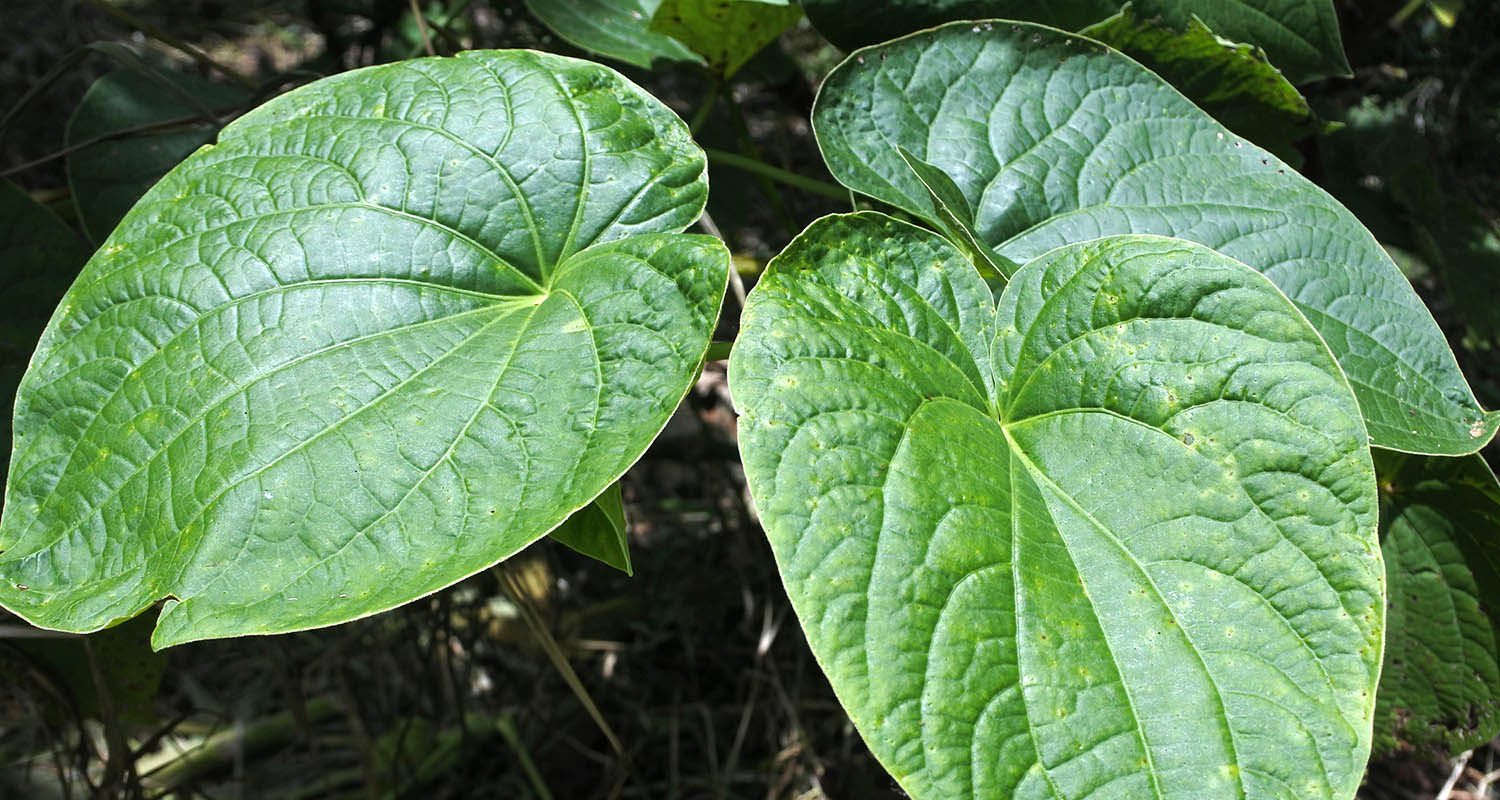 Kava is a root native to the Pacific Islands that contains GABA-activating compounds called kavalactones.[ref url=”https://www.ncbi.nlm.nih.gov/pmc/articles/PMC4917254/”] A Cochrane Review (the gold standard for research reviews) found that kava significantly decreases anxiety with mild-to-no side effects.https://www.ncbi.nlm.nih.gov/pubmed/12535473 Two other studies found that kava is comparable to benzodiazepines at relieving anxiety, without the side effects or risk of addiction.[ref url=”https://www.thieme-connect.de/DOI/DOI?10.1055/s-2007-979474″][ref url=”https://www.ncbi.nlm.nih.gov/pubmed/23635869″] Kava activates GABAA receptors, which makes it great for sleep,[ref url=”https://www.thieme-connect.com/DOI/DOI?10.1055/s-2001-14334″] and kava tea is a good alternative to alcohol if you want to loosen up without the hangover and damage that drinking incurs.
Kava is a root native to the Pacific Islands that contains GABA-activating compounds called kavalactones.[ref url=”https://www.ncbi.nlm.nih.gov/pmc/articles/PMC4917254/”] A Cochrane Review (the gold standard for research reviews) found that kava significantly decreases anxiety with mild-to-no side effects.https://www.ncbi.nlm.nih.gov/pubmed/12535473 Two other studies found that kava is comparable to benzodiazepines at relieving anxiety, without the side effects or risk of addiction.[ref url=”https://www.thieme-connect.de/DOI/DOI?10.1055/s-2007-979474″][ref url=”https://www.ncbi.nlm.nih.gov/pubmed/23635869″] Kava activates GABAA receptors, which makes it great for sleep,[ref url=”https://www.thieme-connect.com/DOI/DOI?10.1055/s-2001-14334″] and kava tea is a good alternative to alcohol if you want to loosen up without the hangover and damage that drinking incurs.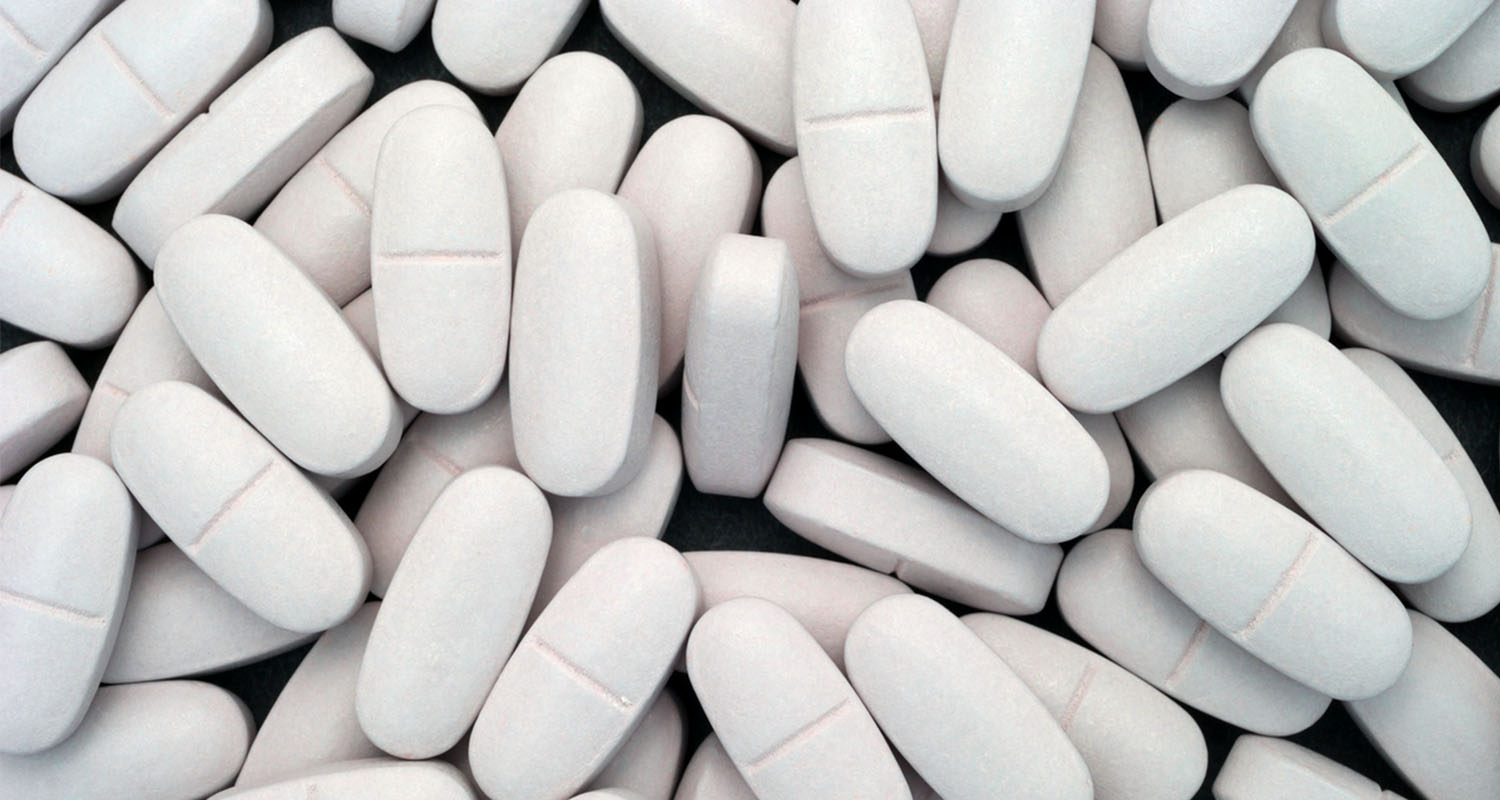 Magnesium is an amazing supplement for stress and sleep. It’s an essential mineral that regulates GABA activation across most of your brain.[ref url=”https://www.ncbi.nlm.nih.gov/pmc/articles/PMC5452159/”] It’s also involved in hundreds of other biological processes, and more than half of Americans are deficient in it. Magnesium is a good supplement to take every night.[ref url=”https://www.ars.usda.gov/ARSUserFiles/80400530/pdf/0506/usual_nutrient_intake_vitD_ca_phos_mg_2005-06.pdf”]
Magnesium is an amazing supplement for stress and sleep. It’s an essential mineral that regulates GABA activation across most of your brain.[ref url=”https://www.ncbi.nlm.nih.gov/pmc/articles/PMC5452159/”] It’s also involved in hundreds of other biological processes, and more than half of Americans are deficient in it. Magnesium is a good supplement to take every night.[ref url=”https://www.ars.usda.gov/ARSUserFiles/80400530/pdf/0506/usual_nutrient_intake_vitD_ca_phos_mg_2005-06.pdf”]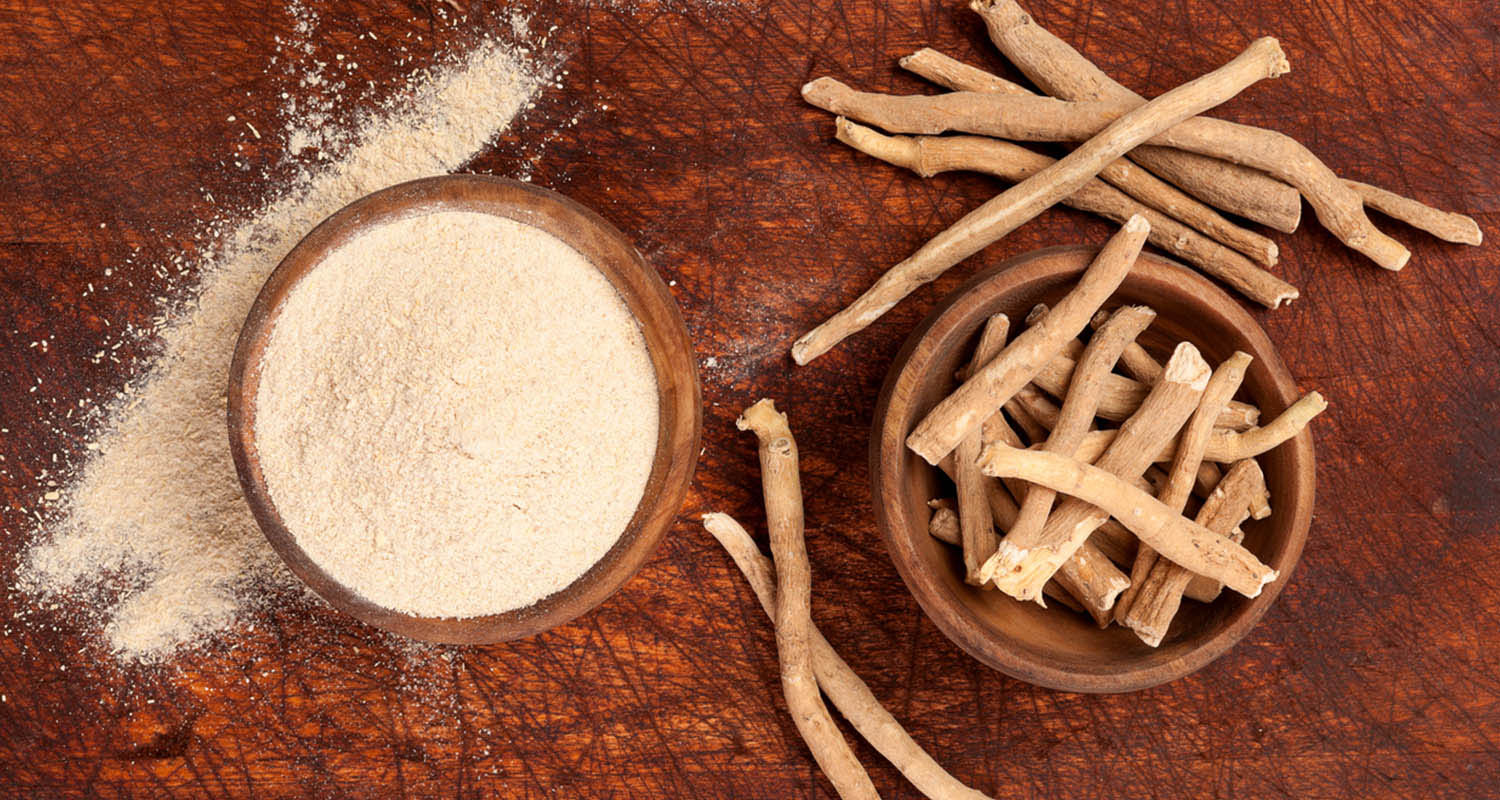 Ashwagandha’s name is Sanskrit for “smell of horse,” and if you’ve ever tried this Indian herb, you can likely attest that the name is accurate. You’ll want to get ashwagandha in capsule form to avoid the smell and taste. As long as you do that, ashwagandha is a great way to relieve stress and promote sleep. It’s a gentle GABAA receptor activator.[ref url=”https://www.ncbi.nlm.nih.gov/pubmed/26068424″]
Ashwagandha’s name is Sanskrit for “smell of horse,” and if you’ve ever tried this Indian herb, you can likely attest that the name is accurate. You’ll want to get ashwagandha in capsule form to avoid the smell and taste. As long as you do that, ashwagandha is a great way to relieve stress and promote sleep. It’s a gentle GABAA receptor activator.[ref url=”https://www.ncbi.nlm.nih.gov/pubmed/26068424″]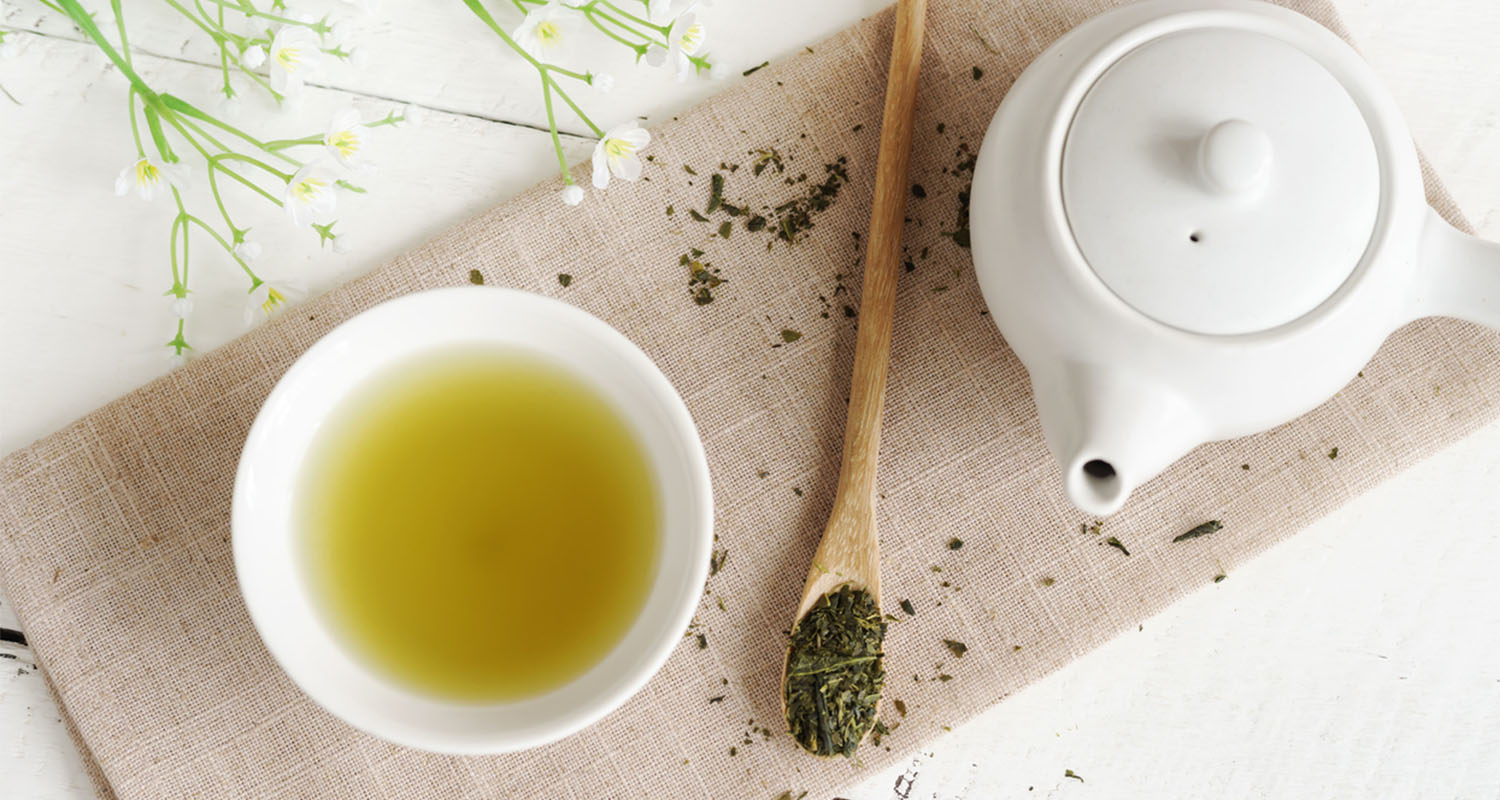 This amino acid is a natural component of green tea and is also available in supplement form. L-theanine increases your brain’s natural GABA production.[ref url=”https://www.ncbi.nlm.nih.gov/pubmed/17182482″] It’s great for easing stress and boosting mood, and it also
This amino acid is a natural component of green tea and is also available in supplement form. L-theanine increases your brain’s natural GABA production.[ref url=”https://www.ncbi.nlm.nih.gov/pubmed/17182482″] It’s great for easing stress and boosting mood, and it also  Phenibut is a strong GABAB activator that Soviet Union scientists developed for their space program, to ease astronauts’ anxiety. Phenibut is a more bioavailable form of pure GABA, which makes it especially powerful. It also improves focus and memory,[ref url=”https://www.ncbi.nlm.nih.gov/pubmed/11830761″] and is a prescription drug in Russia for tension and anxiety. Phenibut is technically legal in the U.S. (it’s in a bit of a gray area), but it has a high risk of dependency and withdrawal if you don’t take it carefully.[ref url=”https://www.ncbi.nlm.nih.gov/pmc/articles/PMC5952553/”][ref url=”https://www.ncbi.nlm.nih.gov/pmc/articles/PMC3604470/”] Phenibut stays in your system for about 48 hours, and people who assume they can take it daily often experience tolerance and withdrawal within a week or two. If you’re going to try phenibut, take it at most twice a week, with at least 3 days between each dose.
Phenibut is a strong GABAB activator that Soviet Union scientists developed for their space program, to ease astronauts’ anxiety. Phenibut is a more bioavailable form of pure GABA, which makes it especially powerful. It also improves focus and memory,[ref url=”https://www.ncbi.nlm.nih.gov/pubmed/11830761″] and is a prescription drug in Russia for tension and anxiety. Phenibut is technically legal in the U.S. (it’s in a bit of a gray area), but it has a high risk of dependency and withdrawal if you don’t take it carefully.[ref url=”https://www.ncbi.nlm.nih.gov/pmc/articles/PMC5952553/”][ref url=”https://www.ncbi.nlm.nih.gov/pmc/articles/PMC3604470/”] Phenibut stays in your system for about 48 hours, and people who assume they can take it daily often experience tolerance and withdrawal within a week or two. If you’re going to try phenibut, take it at most twice a week, with at least 3 days between each dose. You can also raise GABA without supplements or drugs. Stress-relieving lifestyle habits increase GABA as well. A few good options to boost your GABA:
You can also raise GABA without supplements or drugs. Stress-relieving lifestyle habits increase GABA as well. A few good options to boost your GABA: Before we dive into the best back pain stretches, let’s talk about why stretching is such an effective treatment for back pain relief.
Before we dive into the best back pain stretches, let’s talk about why stretching is such an effective treatment for back pain relief. Stretch: Begin lying on the mat with knees bent. While maintaining upper back flat on the ground, rotate legs towards the floor until a stretch is felt. Repeat the stretch on the opposite side. Hold each stretch for 5 seconds, repeat 10 times.
Stretch: Begin lying on the mat with knees bent. While maintaining upper back flat on the ground, rotate legs towards the floor until a stretch is felt. Repeat the stretch on the opposite side. Hold each stretch for 5 seconds, repeat 10 times. Stretch: Begin on all fours. Sit your hips back while reaching out your arms forward until a mild stretch is felt in the back. Hold the stretch for 10 seconds, repeat 5 times.
Stretch: Begin on all fours. Sit your hips back while reaching out your arms forward until a mild stretch is felt in the back. Hold the stretch for 10 seconds, repeat 5 times. Stretch: Begin on all fours. Arch your back towards the ceiling and hold. Then arch your back towards the ground and hold. Hold each stretch for 5 seconds, repeat 10 times.
Stretch: Begin on all fours. Arch your back towards the ceiling and hold. Then arch your back towards the ground and hold. Hold each stretch for 5 seconds, repeat 10 times. Stretch: Begin sitting on the floor with one leg straight, and the other bent. While maintaining a flat back, lean forward by hinging from the hip until a stretch is felt behind the thigh. Repeat on the other leg. Hold each stretch for 10 seconds, repeat 5 times.
Stretch: Begin sitting on the floor with one leg straight, and the other bent. While maintaining a flat back, lean forward by hinging from the hip until a stretch is felt behind the thigh. Repeat on the other leg. Hold each stretch for 10 seconds, repeat 5 times. Stretch: Begin by kneeling on a mat. Lean forward towards the bent front knee until a stretch in front of the opposite thigh is felt. Hold the stretch for 10 seconds, repeat 5 times.
Stretch: Begin by kneeling on a mat. Lean forward towards the bent front knee until a stretch in front of the opposite thigh is felt. Hold the stretch for 10 seconds, repeat 5 times. Stretching is one of the most effective ways to relieve back pain — if you’re consistent with your stretching routine. In order for stretching to work — and for you to get the most pain-busting benefits from your stretching routine — you need to stretch every day.
Stretching is one of the most effective ways to relieve back pain — if you’re consistent with your stretching routine. In order for stretching to work — and for you to get the most pain-busting benefits from your stretching routine — you need to stretch every day. You’ll want to go through a full stretching routine in the AM and PM — but if you really want to maximize the pain-relieving benefits of stretching, you should also plan to take small stretch breaks throughout the day.
You’ll want to go through a full stretching routine in the AM and PM — but if you really want to maximize the pain-relieving benefits of stretching, you should also plan to take small stretch breaks throughout the day.